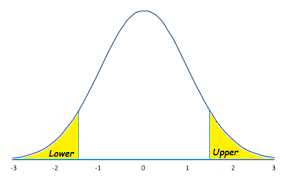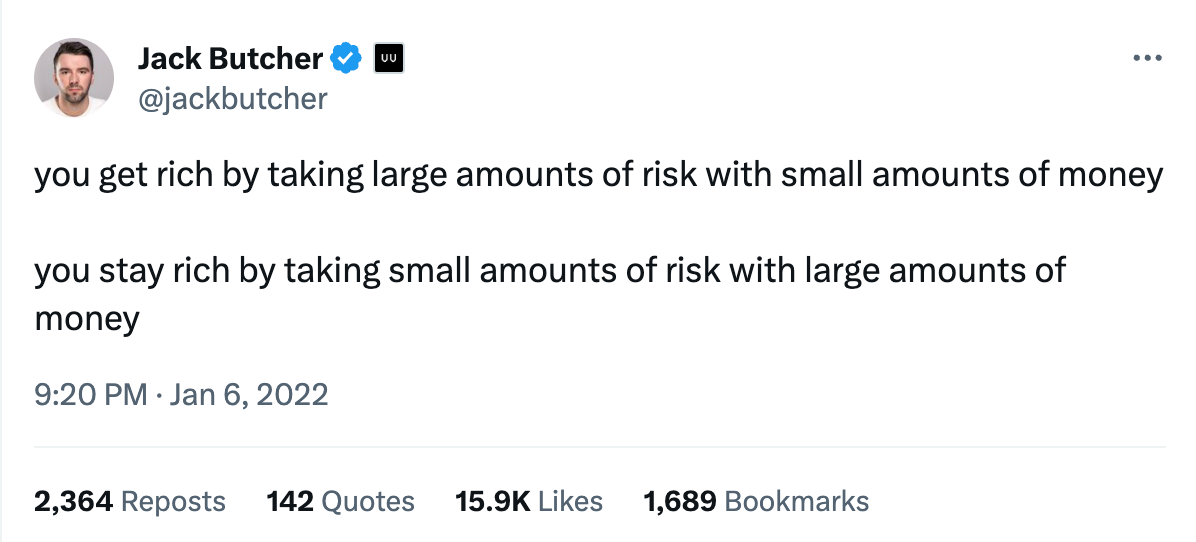Bell Curves At Your Birthday Party
Imagine you're at a birthday party, and there's a game where each kid gets to throw a ball into a bucket. Now, think of the bell curve like a way to show how well everyone did.
The Middle of the Bell: This is where most of the kids will land. They get the ball in the bucket sometimes, but not always. It's like the average score. In a bell curve, this part is the highest because most people are here.
The Sides of the Bell: Now, on one side, there are a few kids who are really good at this game. They get the ball in nearly every time! On the other side, there are also a few kids who find it a bit tricky and don't get the ball in as much.
Shape of the Bell: The reason it's called a bell curve is because of its shape. Picture a bell. It's high in the middle (where most kids' scores are) and then slopes down on both sides (where the few really good or not-so-good scores are).
The Tails of the Bell Curve: Think about the ends of the bell, or the 'tails.' These are really important too. In our game, there are a few kids who do exceptionally well or not well at all. These kids are in the tails of the bell curve.
The Right Tail: This is where you find the few kids who are amazing at the game. They hardly ever miss. This part of the bell curve is low and stretches out because there aren't many kids here, but their scores are really high.
The Left Tail: Over here, you have the few kids who find the game really tough. Maybe they hardly ever get the ball in the bucket. Just like the right tail, there aren't many kids here, and their scores are on the lower side.
So, when you look at a bell curve, the middle is high with most of the scores, and the tails on each side are low but important because they show the few kids who are either really good or finding it challenging. It's like a map showing where everyone stands in the game!
Black Swans
(Concept from Nassim Taleb, who massively inspired this piece)
A major aspect of the bell curve that’s misunderstood are the tails above. We understand them in theory but we treat them wrong in real life. If we go far enough down the tail, we get incredibly rare outcomes. They’re rare and they’re potentially able to cause a lot of damage.
Imagine at the birthday party, we have a catch in the game that if you get a perfect score ten times in a row, you get the whole birthday cake to yourself. Most kids can’t even get a single perfect score so you don’t really plan for what would happen if a kid hit the challenge - the probability is so low it’s not worth it. And you’re right not to prepare each time. The odds are (fictional and) one in ten thousand. But what if your job is to run birthday parties and you do this every single day…
What if you run three parties a day and always do the same game? After ten years, the game is played ten thousand times, by twenty kids each time. The odds that you ruin a random kid’s birthday party are suddenly much higher. You don’t know which kid it will be. But with a tiny probability and a huge number of trials, the overall likelihood of a tail event occurring aren’t that small. We live long lives. If we do something once a day for 80 years, we have 29,200 trials. Let’s look at low-probability events in our own lives.
Misunderstood Risks Around Us
There are three areas I want to discuss where I used to misunderstand risk.
Daily Physical Risks–driving a car, smoking,
Personal Care Risks
Major Conflict - Israel/Palestine Risk
Daily Physical Risks
There are nearly 300 million cars in the United States of America for 330 million people. Once we include people under the legal driving age, we have more cars than people to drive them. Safe to say, most people would not consider driving risky or dangerous.
Between 2012-2022, 423,809 people died in car crashes in America, or about 42k each year. Worldwide, there are about 70 shark attacks per year. But most people are more scared of swimming in the ocean than getting in a car. Why does that make sense?
People get in a car thousands, if not millions, times more often than people get in the ocean. If there are only 600 times more car accident deaths than shark attacks, then the odds you get attacked by a shark any given time you get in the ocean are higher than the odds of you dying in a car crash.
You’re more likely to die in a car crash in your life but more likely to get attacked by a shark each time you get in the ocean.
Globally - odds of dying in a car crash at some point in life are higher
Locally - odds of getting attacked by a shark when you swim in the ocean are higher
Personal Care Risks
If you smoke cigarettes, the odds of you dying of lung cancer any one day is low, but your odds of dying of lung cancer at some point are high.
If you eat mostly fast food, the odds of you getting obese one day are impossible, but the odds of you getting obese at some point are high.
If you exercise one time, you won’t be jacked but if you exercise everyday, your odds of being jacked at some point are high.
How you take care of yourself daily has a tiny effect once. Over a lifetime, the effect is dramatic.
Major Conflicts
A tiny risk of catastrophe over a span of years leads to unacceptable risk.
A bank constantly prioritizes earnings in the quarter. If a manager shows losses, he might lose his job. Then, every manager takes on deals that push their risk out farther and farther into the future. A hundred managers pushing small risks out into the future leads to a large risk of massive proportions at a future date.
A country facing a small but persistent military risk is facing a major risk overtime. Look at Israel and Hamas. Hamas has a very small chance of being able to kill every Jew, part of their goal as stated in their charter. But the probability is not zero. Every day that Hamas exists, the odds that they will realize their goal at some point increases. The odds of Israel’s defense weakening one day and Hamas taking advantage of that increase overall each day because of an increased number of trials and natural variability.
That is why Israel treats Hamas as a serious risk to the entire state of Israel, even though they probably don’t pose a country-wide threat on any one specific day.
Using Low-Probability Events To Our Advantage: Risks & Habits
Risks
Risk determines return in a perfect world. The more risky an investment, the more you stand to make. Think about sports betting.
Betting one dollar on Lebron James to score more twenty points in a game might win you two dollars
Betting on Lebron to score more than twenty points and get more than ten rebounds might win you ten dollars
Betting on Lebron to score thirty points, get ten rebounds, ten assists, zero turnovers and to win the game on a buzzer beater could win you a hundred thousand dollars
The more variability you introduce, the more risky, the greater your return. We can use this to our advantage
To get a big outcome, take a big risk with little on the line. As long as you don’t risk total ruin (death and jail), you can keep playing. The more times you take these risks, the greater your odds of a big cashout. And you only need one cashout. Once you get a big cashout, you can stay rich by taking small risks with large amounts of money.
*Think - putting a thousand dollars into Bitcoin at 10 dollars (high risk), cashing out and then putting it all in government bonds, Coca Cola, and oil (low risk).
This applies to more than just money though…
You can use the same principles for relationships.
If you want a great relationship, you need to show commitment. You need to put yourself out there and be emotionally vulnerable. That’s an emotional risk. Once you do that, and it works, (cashout) your risks get much smaller. The same conversation or action becomes less risky once you’ve survived vulnerability the first time with the other person.
Habits
James Clear has a line I love that I paraphrased into a motto for myself “good habits make time my friend”. We spoke about tail risks and how low-probability events being potentially detrimental. This is the flipside to it.
If you exercise regularly, time is your friend. If you keep up the habit and simply wait, you will have amazing results. You’ll be stronger and mentally sharper than your friends without that habit.
If you eat well, time is your friend. You’ll get sick less, you may live longer and your body will stay younger longer.
The reason I love this so much is because time is inevitable. Time goes on and has no feelings towards you, good or bad. That makes it the most dependable thing on earth. Your job is to make it your friend.
TLDR:
Something low-risk repeated thousands of times isn’t really low risk
Most terrible things were low-probability locally, high-probability globally
Win by taking lots of risks with small losses until it happens
Make time your friends with good habits and patience






To myself!!!
This made me remember something I read back in ‘07:
“Is There Anything Good About Men?” By Roy F. Baumeister. I think I have the full media transcript somewhere...
Send to someone who needs to break bad habits